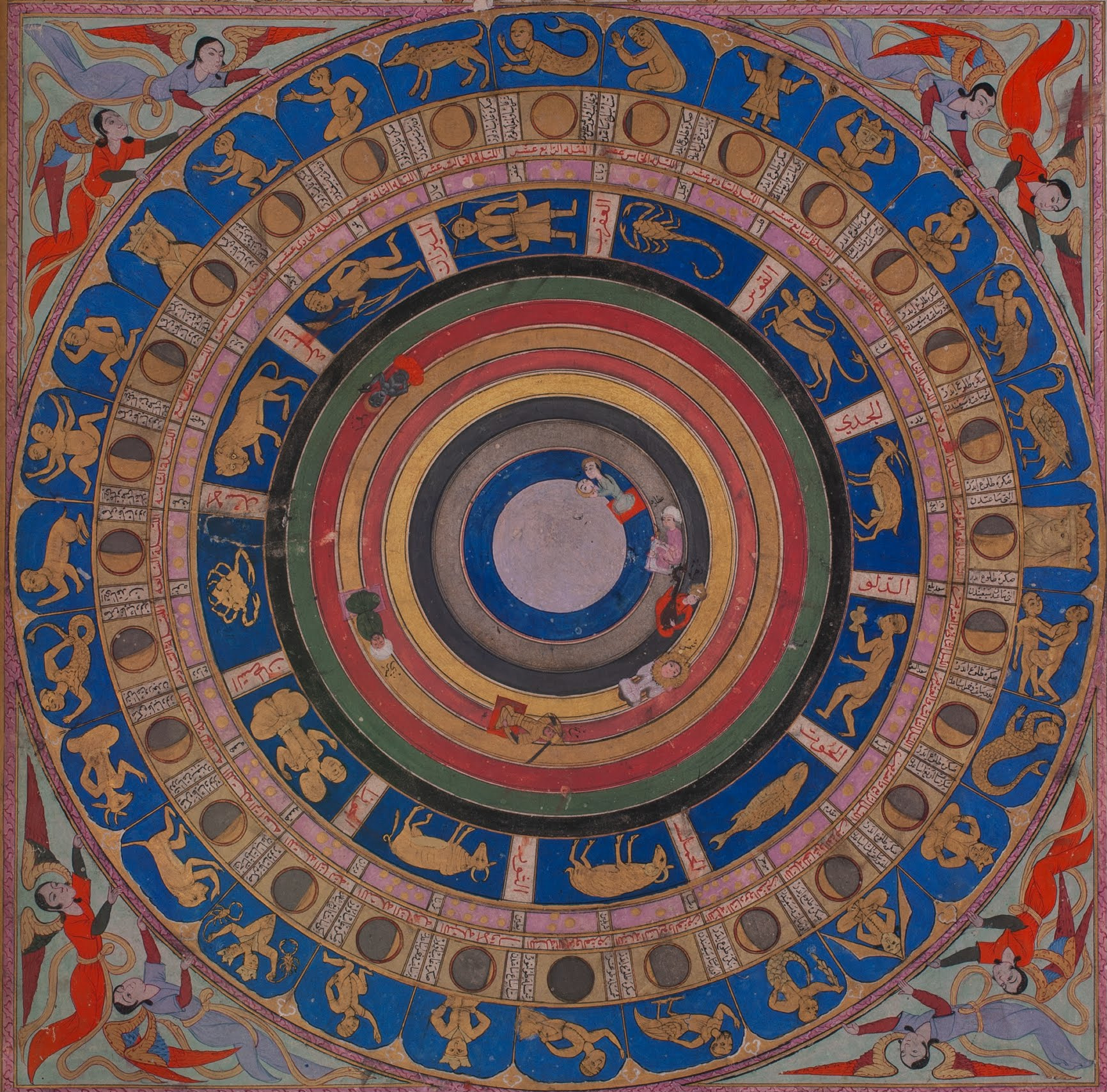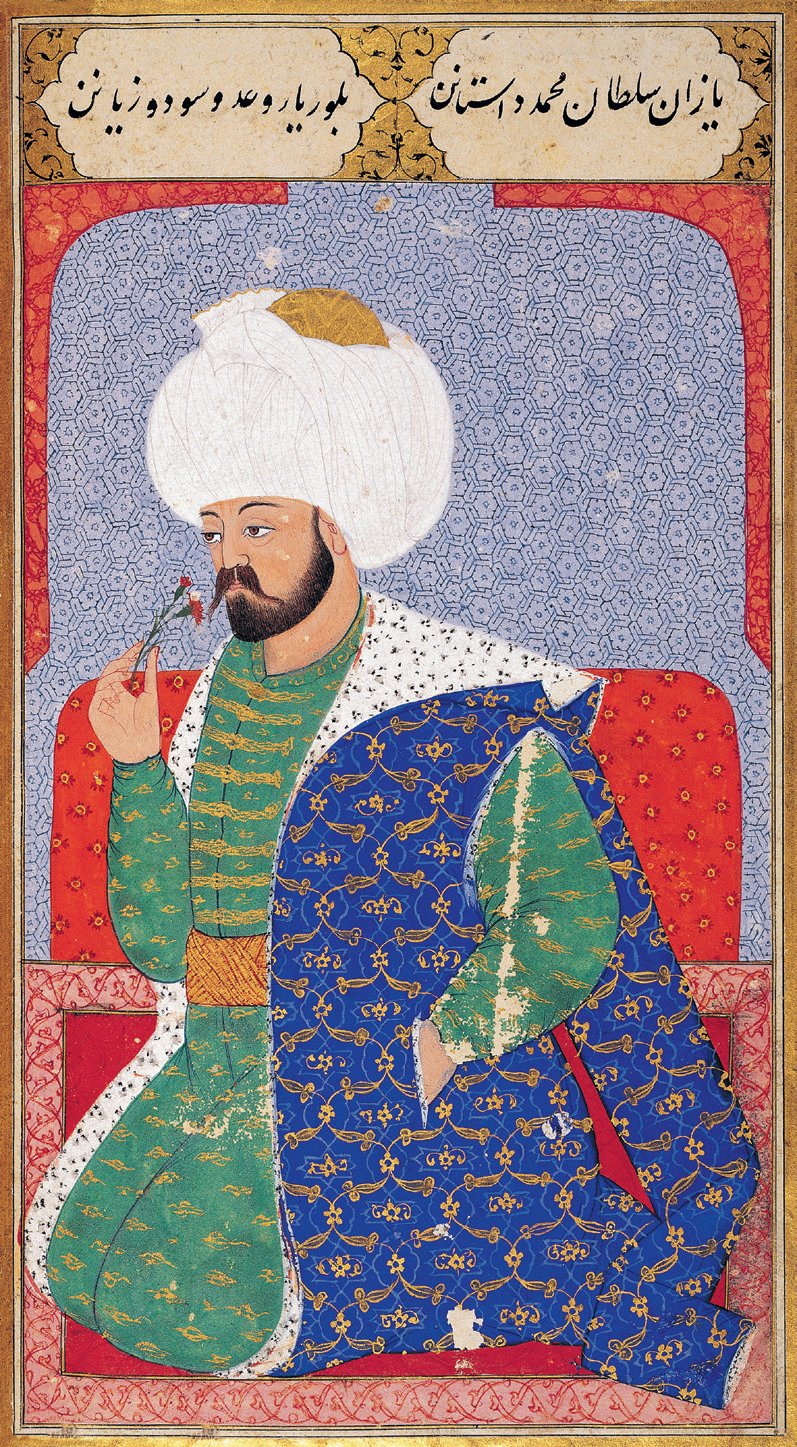Time for something unique! The image we present today is a part of the richly illustrated manuscripts of the 16th century, dedicated to Sultan Murad III and entitled Zubdat al-Tawarikh. The manuscript contains 40 miniatures of the finest quality, reflecting the mature Ottoman court style of the latter part of the 16th century. The first miniature in the Zubdat al-Tawarikh is a celestial map with the earth surrounded by seven heavens, signs of the Zodiac, and the lunar mansions, symbolizing the macrocosm. Beautiful!
The art of Ottoman Turkish miniature painting reached its peak in the 16th century, especially during the reigns of Suleyman the Magnificent and Murad III, who were both great patrons of art. Most of the miniatures executed in the 16th century took their subjects from Ottoman history, illustrating major political and social events of the time. Less attention was given to producing literary manuscripts. Illustrated religious texts, which increased in number later in the century, very often remained in a historical framework. That is, in some of the major books on world history, Ottoman sultans were linked genealogically with Koranic and Biblical prophets. The Zubdat al-Tawarikh is a book of that nature where the text is a summary of Biblical and political world history covering the creation of the world, stories of the prophets and prominent historical figures of the past, and largely Turkish history to the time of the reigning sultan Murad III, also including genealogical accounts of the first twelve Ottoman sultans. The author was Seyyid Loqman Ashuri, the prolific historiographer of the Ottoman court during the period of Murad III, who, in his introduction, explains how he compiled this world history from different sources.
P.S. Stars, comets, planets ... take a look at some of the best depiction of celestial bodies in art history! Some of them are really surprising!


 Seyyid Loqman Ashur
Seyyid Loqman Ashur